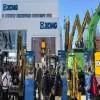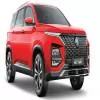CW Design Build spoke to
Jesal Lodha about her journey to becoming her own boss, the challenges faced by a young design firm, design philosophy and more.
What is your vision for The Little Details?
At TLD, we believe that the spaces we inhabit have an impact on our behavior as well as our wellbeing. Therefore, our vision at TLD is to create spaces that resonate with the personality of its users. We strive to create spaces that are not only aesthetically pleasing but also mindful of meeting all of the client’s requirements as well as their aspirations.
What inspired you to become an entrepreneur and start your own interior design firm?
As I designed corporate spaces for 6.5 years, there was a constant lingering desire to explore designing residential & hospitality spaces. As I was always ambitious about having my own firm, when I was approached by a friend to design a space, it became the inception of TLD.
As a young gun in the market, what are the challenges you face and how do you overcome them?
Firstly, to get constant projects- word of mouth plays a significant role in attracting new clients and projects in the interior design realm. The first few projects came through close friends and family, eventually progressed into building connections and gaining exposure through social media platforms. I would strongly recommend everyone who owns a business today to immediately develop a website, create social media handles and register on various networking groups to engage and expose yourself and the firm to a larger audience. The next one being, budgets. With varied interior designers around, being a young practice most often clients approach us with the assumption that we can cap a project in a specific amount or our design fee can be negotiated. Last but certainly not the least, value for time. The overall design process is multifaceted and time- consuming, sometimes due to the limitations offered on- site. It’s the slow brewing of ideas and transforming the client’s vision into reality that can push the anticipated time frame for the project.
What difference have you observed in your design philosophy being the principal designer of your firm vs being an employee?
As I began working for myself, my design ideology and the responsibility of execution has evolved. Since, working for yourself comes with great excitement and responsibility. While working as an employee, you are always sheltered by a mentor figure who takes responsibility at the end of the day or be it a client/ any error on the execution front/budget etc. But once you start working on your own terms, you realise with great power comes great responsibility.
How has the pandemic impacted your business? What protocol changes did you make through it?
Like all other businesses impacted by the pandemic, we have had to halt our projects. However, the pandemic has given me insight to evaluate the business and all the projects we’ve done so far. As a designer, it's a daily process of evolving and honing my skills.
How do you approach design to accommodate aesthetics and functionality in residential and commercial projects?
Commercial and residential spaces come with their own challenges and limitations. Residential projects are design centric whereas commercial design revolves around technical aspects like services and circulation. These aspects play a vital role in designing commercial spaces, e.g., FAS, Sprinkler, Lighting and HVAC. Commercial spaces often have a limited time period of execution – say from 90-120days, whereas residential spaces are comparatively more relaxed. Although, a few details remain the standard across the board– like partition details/ skirting details/ switchboard paneling. Above all, since design caters to the requirements of the individuals using the space, we make sure that we adhere to the client’s vision and style.
How do you incorporate sustainability in your work?
Sustainability is growing as a concept around the world and people’s acceptance has increased towards it since 2020. Therefore, we haven’t had the chance to venture into sustainability on our sites so far, but we never fail to pitch the idea at every opportunity we encounter.
How do you balance the requirement of quality and budgets if the situation arises?
We decide budgets at the very beginning of every project. But come to a situation where it needs to be revisited, we always tell our clients never to compromise on Civil, Plumbing, AC, Lighting quality as they make the foundation of every space. We then balance our budgets by not going overboard with soft furnishings, décor items, accessories.
Which of your projects till date have been the most innovative and experimental and how?
Our first project came with its own challenges. We had 90 days to execute and a tight budget to work around. To ensure an in-time handover, we customized furniture from a local vendor in Jodhpur. To add to the ambience and aesthetic of the space, we worked with an upcoming artist, using cardboard boxes to create a theme wall for a concept driven sheesha lounge accentuated with pinewood.
How would you define your style of design? How do you ensure that your projects bear your signature?
As designers, we are constantly evolving. I strive to achieve timeless spaces through design. Wainscotting and use of mirrors in some proportion is a constant across all our projects.
What changes have you perceived in your clients (in terms of demands, awareness, aesthetics, etc.)?
Clients are now a lot more cautious in understanding the dynamics of their space – multipurpose room - space that can convert from a tv room – to a guest room – or a study room. Real estate comes with a high price tag in Mumbai, it becomes imperative for us as designers to optimize every sq ft of the space.
Tell us about the projects you are working on currently.
We are currently working on three apartment projects across Mumbai. All of them are driven by varied client briefs and revolve around the use of white and pastel colours. One of them is a modern contemporary, another a luxurious contemporary home and lastly, a country house style with an indigenous material palette.
What advice would you like to give to aspiring architects/designers?
To not be afraid of making mistakes and unbarred from learning at every stage. All of which will shape and transform you and your design skills over the years to come.


















